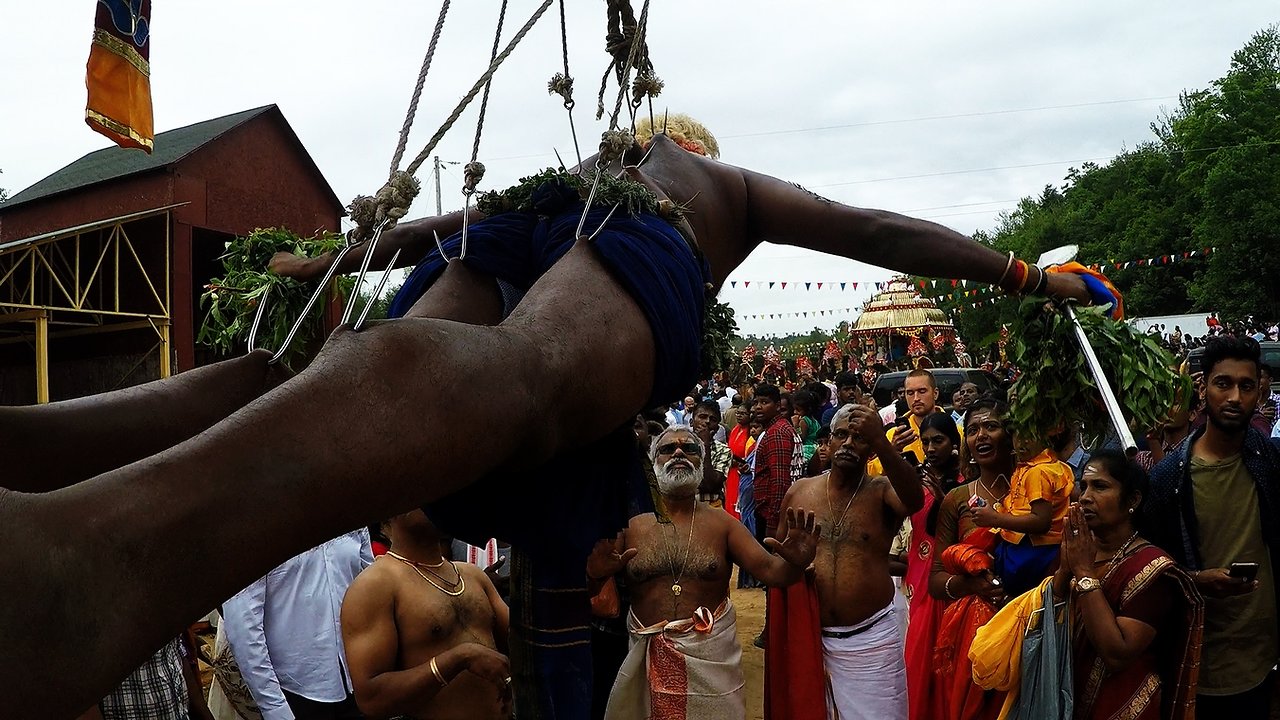Premium Only Content

Extreme show of faith beyond ordinary human endurance
Almost every religious faith has ceremonies and traditions that are unique to that faith. Many of them are based on beliefs and ancient teachings that date back thousands of years. Some of the practices are immediately understandable to other cultures and yet others leave us with questions. It is easy to forget, but most religions are also founded on the idea that acceptance of other faiths and their unique forms of worship is important and expected. But even for the most tolerant and open-minded, this principal of acceptance can be tested. This is the case with an extreme ceremony that is important to the Hindu faith.
Kavadi is one of the largest Hindu ceremonies to take place each year and this one at the Subramanya Ayyappa Temple in Val Morin, Quebec, is the largest of its kind in North America. Kavadi literally means “burden dance” and it is based on sacrifice and offering, displayed by means of imposing physical burdens on oneself. The burden, often one involving pain and endurance beyond normal human limits, is offered in request for assistance from Lord Murugan or Lord Subramanya to help the devotee. This request is usually an unselfish one, centred around a loved one who is in need of healing or relief from a health problem. The burden dance or show of faith continues along a pilgrimage route, and will usually last the entire day.
At the Subramanya Ayyapa Temple, these devotees have had large hooks placed in their backs and legs by the temple priests as part of a ceremony that has been building for many weeks. The devotees are blessed by the priests and then suspended over the front of trucks by ropes that are tied from each of the hooks to large wooden beams that are bounced up and down rhythmically throughout the pilgrimage. Devotees are able to summon incredible powers of concentration and focus, allowing them to withstand and even ignore the pain throught the 8 hour ceremony. After touring through the village, suspended by the hooks, they are let down to walk up the mountain while carrying a decorative statue that represents the temple. Once they reach the temple, they are again blessed by the priests and congratulated by their fellow Hindus.
While these painful and difficult rituals may not immediately make sense to those outside the Hindu faith, those within the community place great importance on them. These rituals and ceremonies have been carried out in similar fashion for thousands of years.
-
 1:45
1:45
WildCreatures
1 month ago $1.13 earnedGiant manta rays surround scuba divers in Galapagos Islands
3.42K2 -
 0:15
0:15
Kittyxkat
3 years ago $14.74 earnedHuman ornament hangs from street light in NYC
6.4K4 -
 2:03:42
2:03:42
UpTime Community Church
4 years agoExtreme Weather, Extreme Faith
387 -
 4:06
4:06
Eric Deters Media
3 years ago $0.01 earnedHuman Nature Vs Human Condition | The Bulldog Show
1645 -
 4:49
4:49
SparkyMark1
4 years ago $0.01 earnedJust An Ordinary Human
151 -
 3:12
3:12
Team Ironclads
3 years agoExtreme Robots Cheltenham 2018: End Of Show Rumble
32 -
 0:09
0:09
ViralHog
3 years ago $0.05 earnedFerret Brings Baby to Show Human
4421 -
 1:31:18
1:31:18
Redacted News
6 hours agoEMERGENCY! NATO AND CIA ASSASSINATE TOP RUSSIAN GENERAL, PUTIN VOWS IMMEDIATE RETALIATION | Redacted
183K242 -
 56:45
56:45
VSiNLive
5 hours ago $4.64 earnedFollow the Money with Mitch Moss & Pauly Howard | Hour 1
51.6K2 -
 52:44
52:44
Candace Show Podcast
5 hours agoMy Conversation with Only Fans Model Lilly Phillips | Candace Ep 122
63K244